The Eight, The Four, the Three and the Two
We’ll walk through Buddha’s teachings here for a moment but before we get to Buddha’s awakening we must look at how the Buddha arrived at the Bodhi tree to begin with. He was the son of a prince, and when he was born his father was told by one of his trusted advisors who was known for his foresight and wisdom that Siddhartha would either lead a great and successful life as a king and conqueror of people or he would renounce everything and be a great ascetic.
The father of course did everything in his power to keep Siddhartha from seeing the suffering of the world, and offered him every pleasure a man could want from his early youth. This boy was spoiled beyond imagination. He had everything, the dancing girls, the cars, the beach houses – you name it. And then one day on a trip outside his castle grounds (Siddhartha is 29), whereas usually the king’s men removed all poverty-stricken people and other suffering folks from his path before he got there, there remained one old suffering man on the side of the road. Such was Siddhartha’s compassion it is said, that he renounced his life just then and there, leaving behind a wife and child in fact (not recommended).
But the wisdom of his teachings perhaps makes up for the boy that the father (and wife) lost in the end. Only that boy would know. Life is messy people. For all of us. He was so struck by the sorrow of the poverty-stricken man that he fed him and then lost himself in contemplation of the nature of suffering and how it can be eradicated. Thus begins the ascetic part of his sadhana, or spiritual work which culminates in his enlightenment, his great awakening, under the Bodhi tree in India.
His teachings that he comes back with had tremendous appeal of course, one reason being is that they were open to everyone, not just the Brahmin or priestly class which typically oversaw religious teachings in society. It was a radical transformation of not just the religious landscape, but the social one as well arguably. In this sense Jesus was also a religious radical, upending the longstanding respect and admiration given to the Jewish rabbinic elders who he felt had lost their way. The same folks that led him to his crucifixion of course.[1] Buddha’s teachings are unique however. He is not the man of the great drama of death or the performer of miracles as Jesus is, he is not God’s Son. He is but an ascetic monk who is trying to help alleviate suffering in the world and as such he packages up a simple intellectual artifice that opens up the wisdom of the ages to virtually everyone.
Forget about your mysticism and power and worship and God stuff, know that there are Four Noble Truths[2] and they are worth repeating. It’s also worth noting that traditionally this is understood as the Buddha’s highest teaching, his highest truth you night say. They are:
- There is suffering
- The cause of suffering is desire
- Cessation of suffering is possible
- Follow the Noble Eightfold Path for the cessation of suffering
The simplicity of it, the approachability of it. And the very crystalized wisdom within it, is everything really. The Noble Eightfold path then, to relieve yourself of suffering, what you might call a suffering minimization solve, looks like the following:
- right view,
- right resolve,
- right speech,
- right conduct,
- right livelihood,
- right effort,
- right mindfulness, and
- right samādhi(‘meditative absorption or union’)[3]
This is the Buddha’s prescription for those who are done with suffering, the final culmination of which leads to nirvana. In classic Buddhist symbolism, the Noble Eightfold Path is often represented by means of the so-called wheel of dharma (dharmachakra), with its eight spokes leading from the center. No doubt its likeness to a ship’s steering wheel is no accident.

Buddhist Dharma Wheel symbolizes Eightfold Path[4]
Everyone has their own demons but desires of the flesh are probably the strongest in man. But again Buddha doesn’t tell us that these desires should be abandoned altogether, but that their pursuit should be measured. And that all action should be guided by the Noble Eightfold Path. Regardless, truly appreciating and understanding desire’s role as the root cause of suffering is absolutely essential for the proper pursuit of the spiritual life, and Buddha hits the proverbial nail on the head here. One of the keys to unlocking this juggernaut of a problem however is that, and this is an important insight, you cannot shed desire by direct renunciation, it must be renunciation by replacement. Ultimately one desire must be replaced with a higher desire. For nature of course abhors a vacuum.
This truth is taught by Ramakrishna. And after desire is exhausted, through a sincere approach to the divine for transcendence, one higher desire (for divine bliss) overshadows the lower desire (carnal pleasure) and so the jīva fitters its process of more closely revolving around, through and into, the divine. But what’s lost in these models of enlightenment, salvation you might call them in a more religious sense, is that they are rooted in self, the individual – Jung even called (the process by which the Soul becomes divine you might say) it individuation. Alchemy of the Soul, transforming it to become more whole, more balanced – through mystical means, through sadhana or spiritual practices, asceticism or Christ or crystals or whatever.
And yet throughout all this, all these vast and influential religious phenomena throughout history, proper understanding of not just their truth, but they are but man-made constructions of a ‘truth’, intellectual structures that are contextualized to the societal politique of the time. Structures that not only evolves with these complex societies and civilizations but ones which (one could argue) were absolutely fundamental toward establishing, and maintaining, these advances societies and civilizations. And now they are for all intents and purposes being abandoned. Caveat emptor.
God died and we had the first half of the twentieth century, what emerged from that rubble though? Not sure that’s clear but what should be clear is what psycho-metaphysical structures are necessary for the well-being of these advanced societies, and for the individuals as well of course. While no doubt there is philosophical utility in the notion of res cogitans and res extensa, it should be abundantly clear at this point that these two domains in and of themselves exist in the individual human, homo machina, from which this intellectual exercise can even be possible. [Kant again]
We find a similar idea of these Noble Eightfold Path in one of the verses in the Dàodé Jīng, but the impact and influence for the concept as a basic foundational philosophical set of axioms is missing. Part of the power of the Buddha’s teaching is of course his rooting of the teaching in the Four and the Eight, reflecting an expansive understanding of not just the universe but the psyche as well.
The highest good is like water.
Water gives life to the ten thousand things and does not strive.
It flows in places men reject and so is like the Tao.
In dwelling, be close to the land.
In meditation, go deep in the heart.
In dealing with others, be gentle and kind.
In speech, be true.
In ruling, be just.
In business, be competent.
In action, watch the timing.
No fight: No blame.[5]
It’s not a mapping exercise necessarily between the Buddhist Eightfold Path and the guidance here from Lao-Tzu (they are purportedly created at around the same time) but nonetheless we find these foundations of the great sage, the wise man, through which his knowledge of the Tao can be fully realized, through which life can be lived properly, balanced through change and growth, through joy and sorrow, happiness and sadness, birth and death.
Buddha also called this the Middle Way, which is an important point for consideration in the context of this discussion here. He is not at all advocating full renunciation of desire, this is clearly not for everyone, he is advocating a set of principles to guide your actions such that suffering is minimized and that extremes should be avoided at all costs.
Aristotle stresses a similar point in his ethical teachings. Any virtue taken to its extreme becomes warped and ultimately harmful to one’s character. What is to be practiced is the golden mean, the mean between extremes such that true balance, of said virtue, can be found. This has a corollary in Pythagorean philosophy as well of course, but Buddha’s teaching is more direct, and again rooted to this idea of suffering which he sees as the major affliction of the world.
These eight limbs are also to be found in the bāguà from the I Ching (Yi Jīng) as well, except in this system they are mapped to their primordial elements, in both their Earlier Heaven Sequence and Later than Heaven incarnations as it were.

Earlier Heaven Sequence and Later than Heaven bāguà arrangements (Sequence Diagrams)
One can look at the trigrams of the Yi Jīng bāguà, the three through the lens of Theravada (literally school of elders) Buddhism here – morality for harmony in the sphere of Man, samādhi being the contemplation of Heaven and the insight as the harmony of the Earth. They must be wrought together, in synchronicity (in harmony) such that these three fundamental forces can be manifest in our minds, our external realities and within ourselves, in balance and harmony with the universal structure which we are a part of (as one system). It is the grand tuning, this glorious cacophony of sound and light, that we look to effect here in this study. The system is here though, in Buddhism – it is laid out for us. And it also is embedded, implied, in the Yi Jīng in its underlying structure as well as underlying worldview of reality as a flow of energy, through changing (quantized) states of being. The models are complementary actually, except – and here’s the genius of the Yi Jīng – it’s a bloody tuning device. It’s literally a tuning device, you just need to know how to use it.
They not only left a manual. They left tools. Genius.
We have these eight wheels of dharma, the Dharma wheel they call it – which we can know use to better understand the Chinese bāguà, in its two forms – the so-called Sequence Diagrams (down that rabbit hold again, hold on people). Again they look like the figure above, each hexagram constructed using the three basic trigrams – again Man Heaven Earth made up of either yīn or yáng energies with eight possible layouts, states, organized in two ways. The I Ching from this vantage point then becomes that schematic of how the energies move between these fundamental states. These states of being for Man, on Earth as it related to Fate, or Heaven (God you might call it). This is how it can be consulted, by stating your intention, the question that is to be asked, and going through the process of selecting the hexagrams, which consist of two bāguà each – two of these fundamental states put together, overlaid on top of each other, locating the state of being within a universe of possible states of being that can be visualized as points on a sphere:

64 hexagrams of I Ching laid out across the surface of a sphere.[6]
This implies movement across the outside of this sphere, which implies that the sphere is some sort of projection from the center – Plato’s world of forms again. Forms within forms, spheres within spheres. Intellectual yes but also real in the (very real) sense that from these projections our physical reality is manifest. This is why Plato thought that this world, the world of thought basically (Nous again) was more important than the world of the senses. Turns out that they are both just as important as each other but nonetheless the insight is revolutionary – at least for his time and place.
Patañjali’s system of Yoga is also based on eight principles[7], linking the 8 across all of the ancient philosophical systems more or less – with the Ogdoad, the Old Kingdom representation of the primary deities from Hermopolis closing the proverbial loop from West to East, or vice versa basically.


Eight Limbs of Patañjali and the Egyptian Ogdoad
These systems are male based perspectives, no doubt coming from male based practitioners and priests. The two, the four and the eight of course. But what about the one, the three or the five? What about the harmony of the spheres, of the systems? We don’t just want to understand the structure, we also need to understand the underlying harmony – the sound of the universe as it were – that we are trying to achieve. We are trying to tune the instrument remember?
This is why the interpreter of tarot card readings, and the priest of the Yi Jīng, are so important. They actually are the 1, 3 and 5 – embodied forms of enlightened energy through which a particular reading is given, revealed you might say. And the ceremony that is performed, and the intention of this ceremony, and the power of the priest, are all critical factors in the interpretative process. It is we that know what the universal harmony sounds like, what it looks like, what it feels like, and based upon this knowledge, knowledge which is given to us, revealed to us through God’s grace (through prayer and sacrifice) we may interpret the signs. The ritual surrounding the reading is a fundamental part of the reading itself, it creates the scared space through which the universe will reveal herself to you. It is an answered prayer.
So he left us tools and guide books basically, so that we weren’t completely left in the dark. We are stubborn creatures though, and think we know a lot more than we actually know. I am not alone here no doubt. And this ignorance, this veil, is part of the game anyhow so who can blame us really?
[1] The Jewish elder and rabbinic’s communities role in the crucifixion of Christ is clear and well documented. Please keep in mind that sometimes doing nothing to stop an atrocity, that you have the power to stop, is itself an atrocity albeit perhaps not as grotesque as the atrocity itself. Blame is not the question here, or the important point we are making, but the Jewish people and Jesus have of course a long sordid history.
[2] ‘In Buddhism, the Four Noble Truths Pali: cattāri ariyasaccāni Sanskrit: catvāri āryasatyāni; , “The four Arya satyas” are “the truths of the Noble Ones”, the truths or realities for the “spiritually worthy ones”.’ From Wikipedia contributors. (2021, January 24). Four Noble Truths. In Wikipedia, The Free Encyclopedia. Retrieved 08:26, January 28, 2021, from https://en.wikipedia.org/w/index.php?title=Four_Noble_Truths&oldid=1002365980.
[3] Adapted from Wikipedia contributors. (2020, December 26). Noble Eightfold Path. In Wikipedia, The Free Encyclopedia. Retrieved 12:15, January 18, 2021, from https://en.wikipedia.org/w/index.php?title=Noble_Eightfold_Path&oldid=996454554.
[4] By Chris Falter – Own work, CC BY-SA 3.0, https://commons.wikimedia.org/w/index.php?curid=18693899.
[5] https://www.wussu.com/laotzu/laotzu08.html
[6] See http://www.i-ching.hu/ for more detail on a fascinating rendition of the transfer of the Yi Jīng hexagrams into 3-dimensional space. Fantastic work.

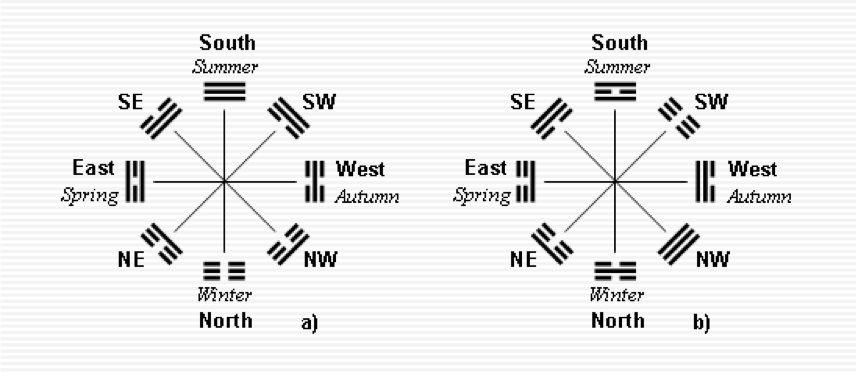
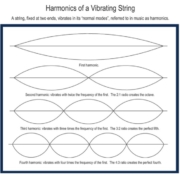
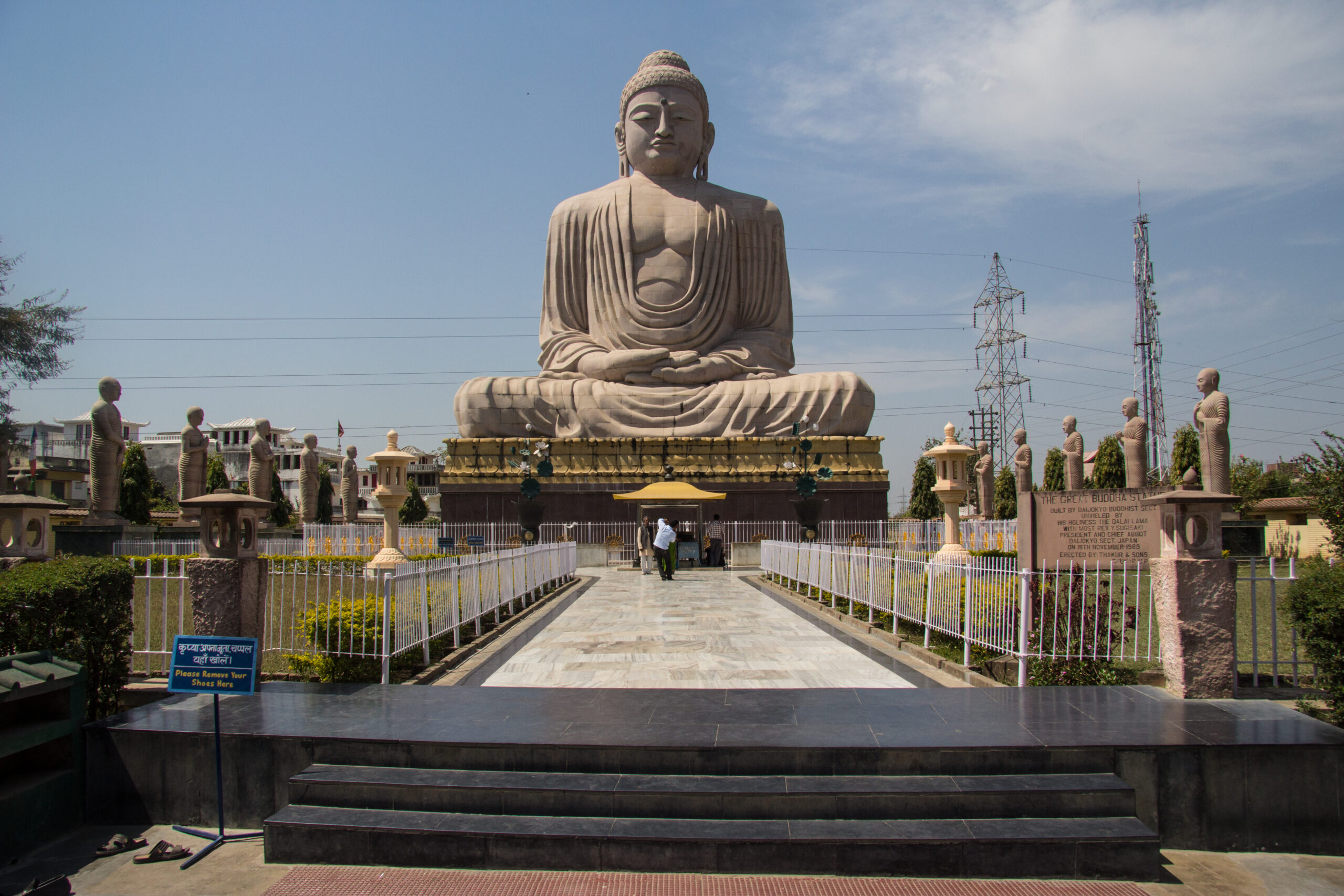
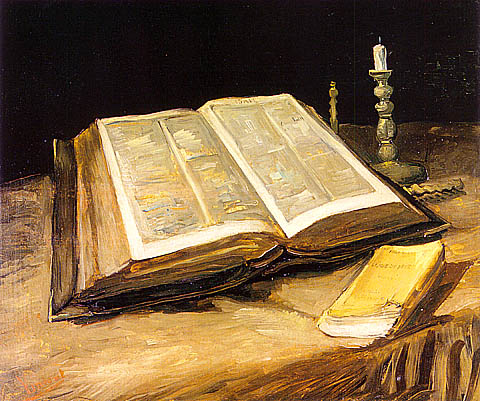
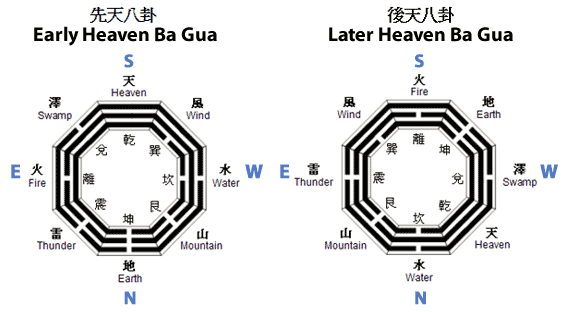
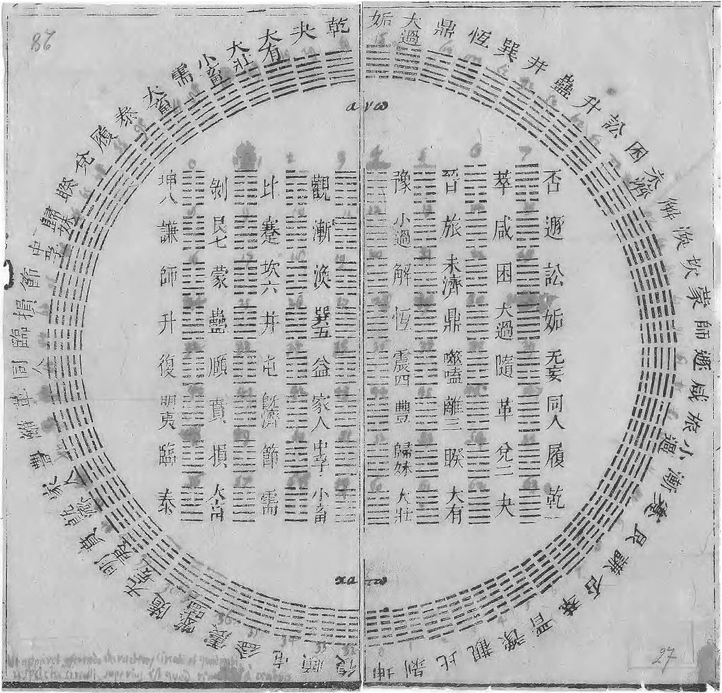
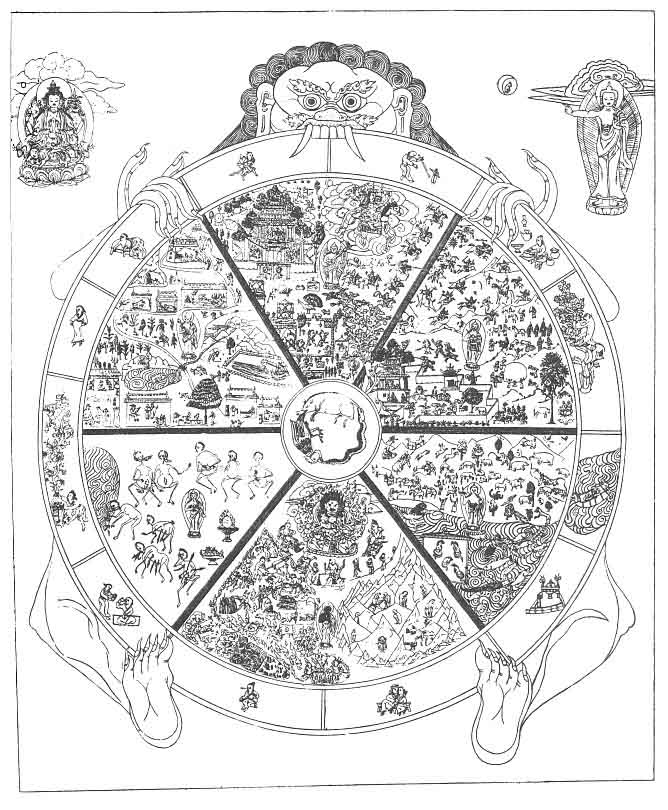


Leave a Reply
Want to join the discussion?Feel free to contribute!